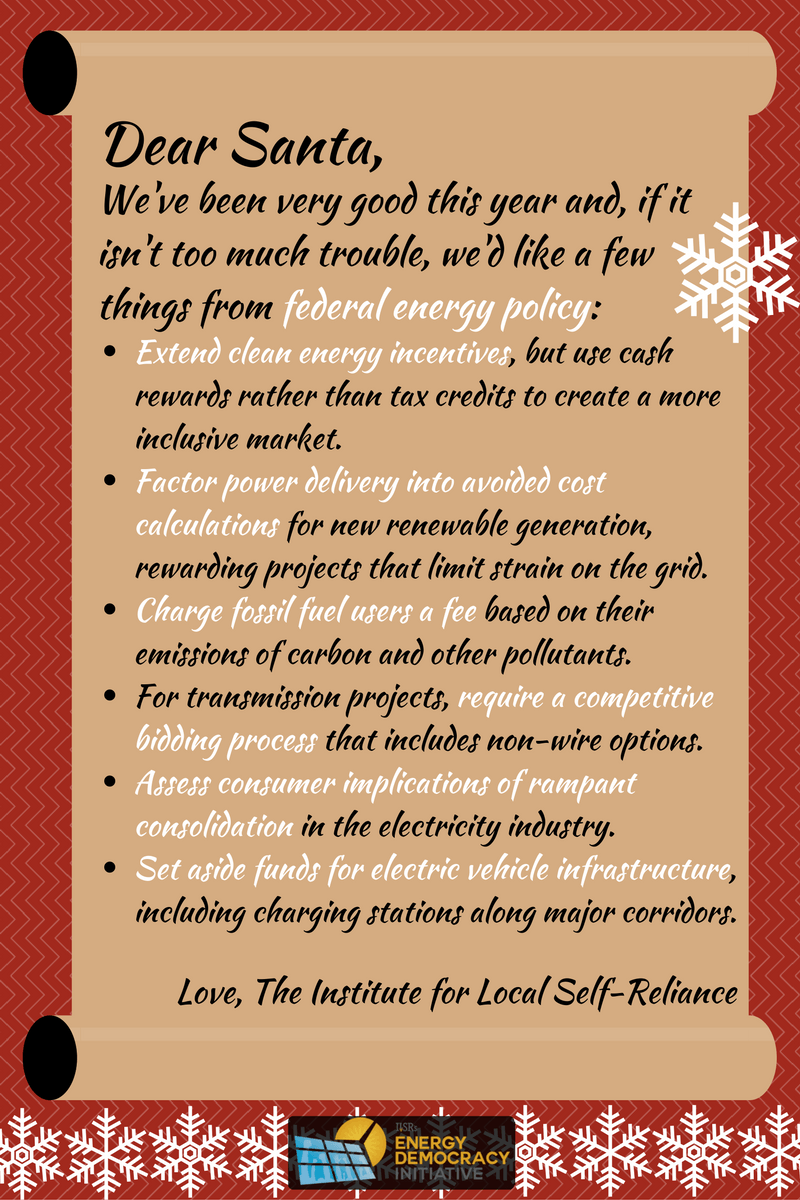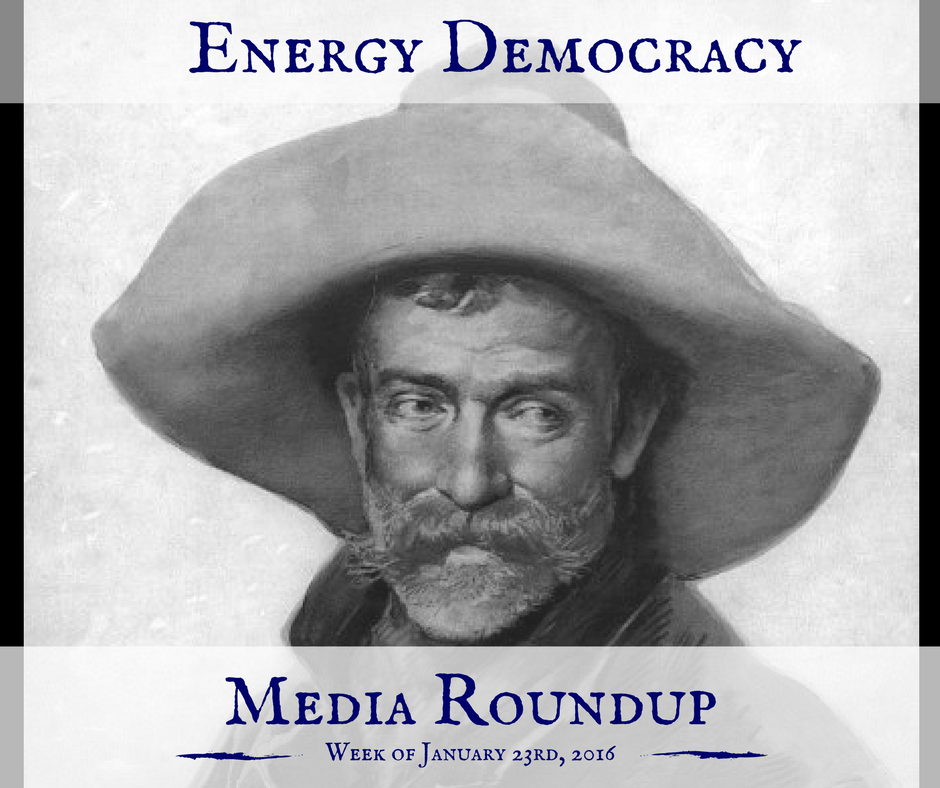![]() A new administration critical of clean energy imposes vast uncertainty on a U.S. energy sector that in recent years has tiptoed toward greater local control and increased renewable energy generation. This year, our federal policy wish list includes a series of items that would keep up the trend and deliver economic benefits to communities nationwide.
A new administration critical of clean energy imposes vast uncertainty on a U.S. energy sector that in recent years has tiptoed toward greater local control and increased renewable energy generation. This year, our federal policy wish list includes a series of items that would keep up the trend and deliver economic benefits to communities nationwide.
This infographic spotlights our most sought-after policies, and while it would be nice if Santa could deliver them this week, we likely must rely instead on incoming federal officials to drive changes.

Clean Energy Incentives
Extend clean energy incentives, using cash rewards in place of the federal tax credits. Offering cash incentives for solar, wind, and other projects lowers the barrier to building them, opening the field to more market participants and reducing the need for Wall Street financiers.
Conversely, without tax credits or a cash substitute, the federal government could impose a fee on fossil fuel users based on the amount of carbon and other pollutants they emit. Measures designed to favor renewable generation, such as other countries’ carbon taxes or Minnesota’s “value of solar” policy, could serve as models.
Include Proximity in Cost of Energy Produced
Update PURPA, the federal law passed in 1978 to promote renewable energy generation, to explicitly incorporate the cost of power delivery in avoided cost. A more comprehensive calculation would reward projects built near substations for putting less strain on the grid, boosting their compensation.
Competitive Bidding for Transmission Projects
Require all transmission projects under federal jurisdiction to undergo a competitive bidding process that includes non-wires alternatives, ensuring the chosen method is the best way to meet the need.
Antitrust Enforcement in Electric Utilities
Ask the Justice Department to study the implications of consolidation in the U.S. electricity industry. A steady flow of mergers and acquisitions in the power sector has stifled competition, with likely implications for consumers.
Electric Vehicle Funding
Earmark Federal Highway Administration funds for electric vehicle infrastructure development, continuing work accelerated under the Obama administration.
This article originally posted at ilsr.org. For timely updates, follow John Farrell or Karlee Weinmann on Twitter or get the Energy Democracy weekly update.





